Inlay is a technique of decorating surfaces of objects or items with inserts made of various materials. Inlay is considered one of the oldest forms of decorative and applied art. An important distinguishing feature of this technique is that the artist creates a flat, not raised, image or ornament during the process.
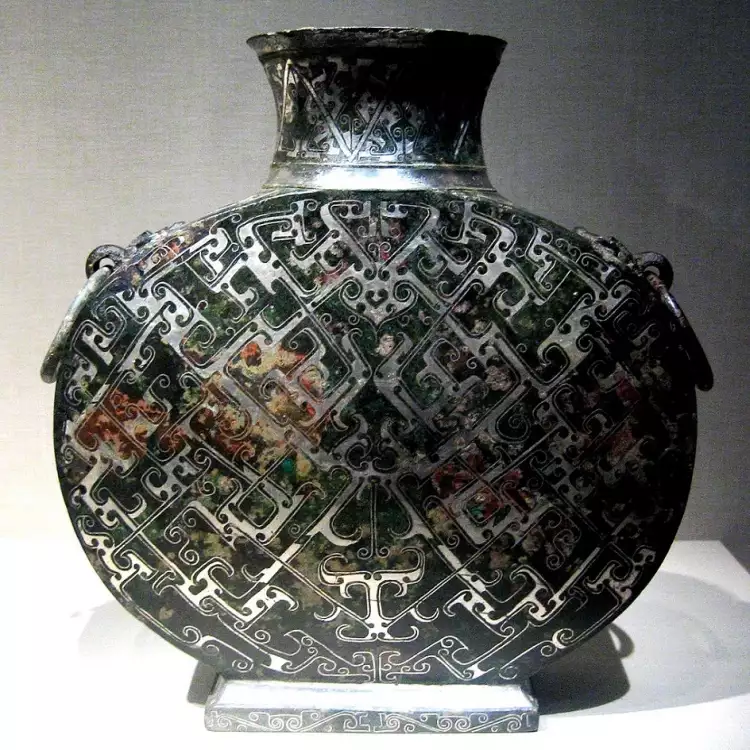 Inlay. Ceremonial inlaid Chinese flask, 3rd century BC
Inlay. Ceremonial inlaid Chinese flask, 3rd century BC
Inlay allows turning the most ordinary everyday objects into vivid and valuable works of art. Affluent people willingly purchase such items to emphasize their status and individuality in the eyes of others.
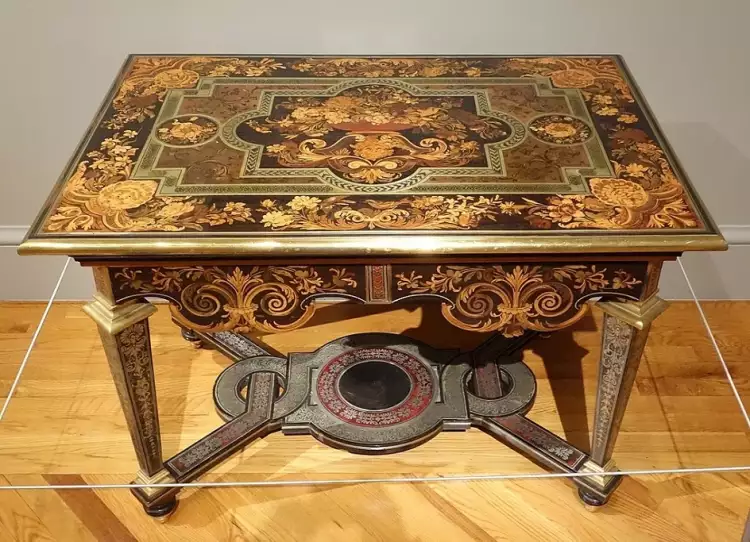 Inlay. André-Charles Boule. Inlaid table, 1680
Inlay. André-Charles Boule. Inlaid table, 1680
Types of Inlay
Inlay encompasses a wide variety of decorating techniques, which are classified:
- By the type of material used (wood, veneer, glass, artificial and natural stone, metals and their alloys, ivory, ceramics, mother-of-pearl, straw).
- By the type of base (wood, stone, metal).
- By the method of attaching the decoration (gluing, firing, mechanical fixation).
- By the sphere of application (for decorating furniture, decor, and everyday items, musical instruments, building facades, walls, floors, and ceilings of rooms).
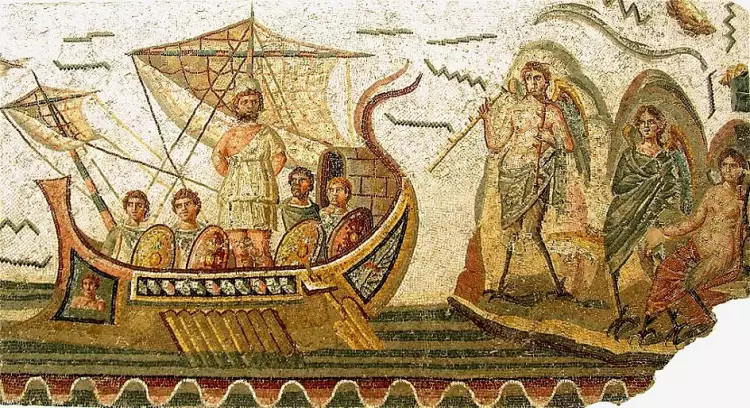 Inlay. Roman mosaic of Ulysses of Carthage, 2nd century
Inlay. Roman mosaic of Ulysses of Carthage, 2nd century
The most common types of inlay have their own unique names. These include:
- Mosaic.
- Marquetry.
- Intarsia.
- Damascening.
- Niello.
Mosaic
Mosaic is the most well-known type of inlay, the essence of which involves covering surfaces with small pieces of solid materials. This ancient technique is widely used in construction for wall and ceiling decoration even in modern times.
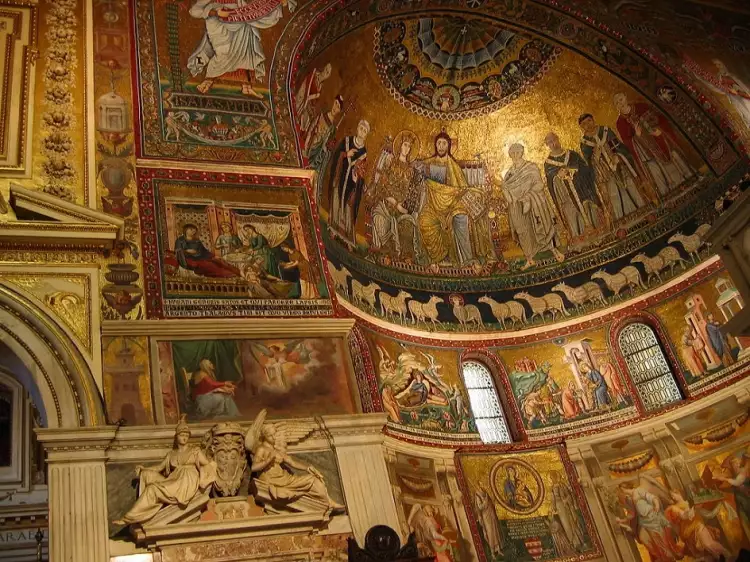 Inlay. Wall mosaic of the Basilica of Santa Maria in Trastevere, 13th century
Inlay. Wall mosaic of the Basilica of Santa Maria in Trastevere, 13th century
Since ancient times, artisans from different civilizations used mosaic not only to decorate small objects but also to create monumental artistic works, such as panels (panno). Mosaic walls, ceilings, and floors are often found in the decoration of magnificent religious temples and rulers' palaces all around the world.
Intarsia
Intarsia significantly differs from mosaic in the way decorative elements are laid. Instead of attaching them to a flat surface, they are placed in specially prepared recesses. In most cases, it's practically impossible to distinguish between intarsia and mosaic decoration by appearance alone.
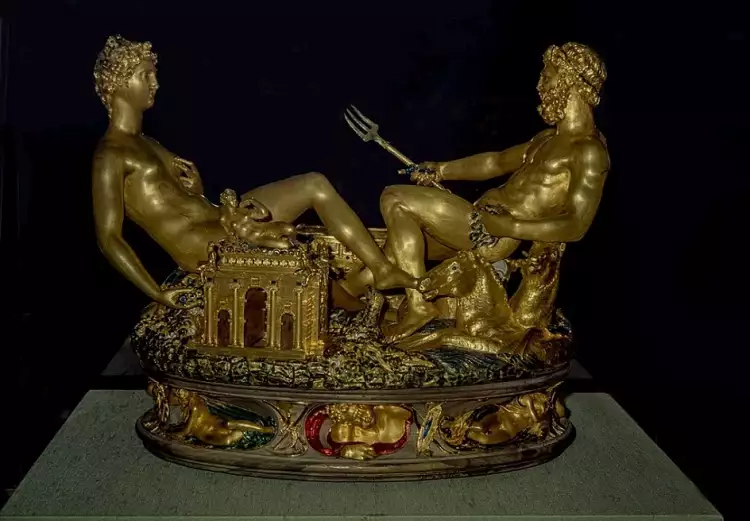 Inlay. Benvenuto Cellini. Saliera, 1543
Inlay. Benvenuto Cellini. Saliera, 1543
Intarsia is ideal for combining materials with different physical properties, such as stone or metal with wood. Placing decorative elements in recesses significantly enhances the strength of the object's surface. This technique is widely used in crafting luxurious furniture, sarcophagi, and boxes, although it's rarely employed for wall decoration.
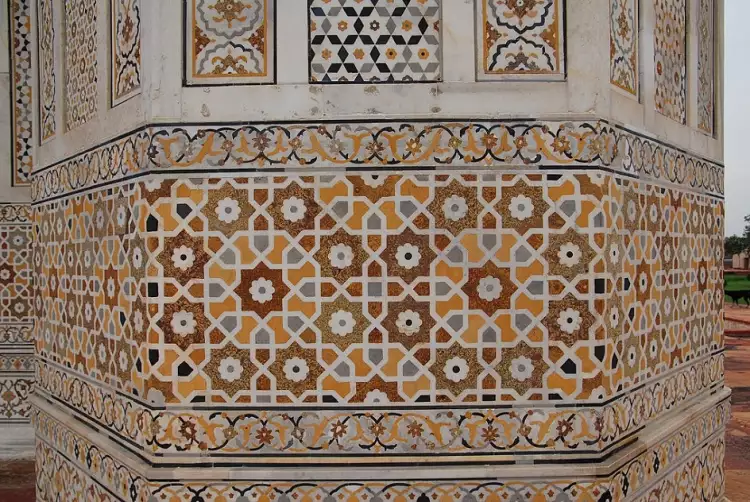 Inlay. Inlaid façade of the mausoleum of Itimad-ud-Daula in Agra, 1640
Inlay. Inlaid façade of the mausoleum of Itimad-ud-Daula in Agra, 1640
Marquetry
The essence of the ancient art of marquetry lies in covering the surface of an object with thin strips of veneer of various colors. Precious wood species are commonly used in this technique: rosewood, plane tree, ebony.
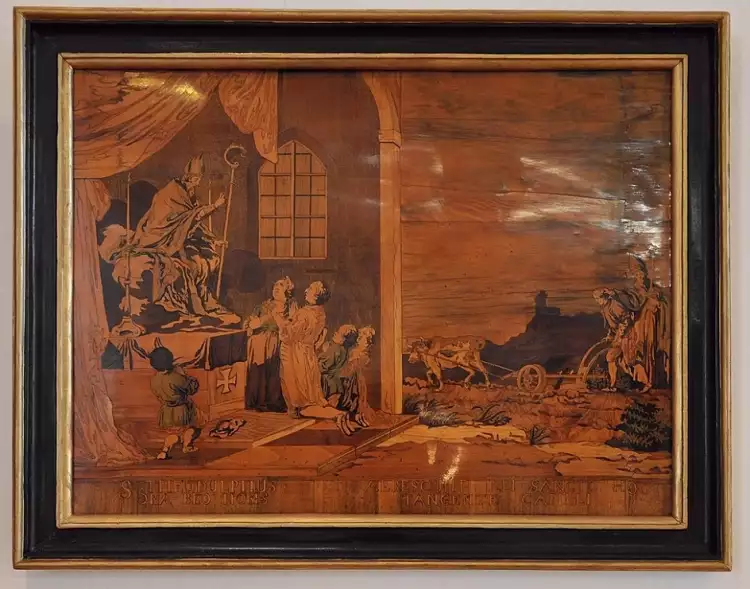 Inlay. Marquetry. Painting by an unknown German artist, 18th century
Inlay. Marquetry. Painting by an unknown German artist, 18th century
European artists have long used marquetry to create case and upholstered furniture, as well as intricate pictures. Typically, after completing the work, the veneered surface is coated with several layers of varnish to enhance the strength and durability of the item.
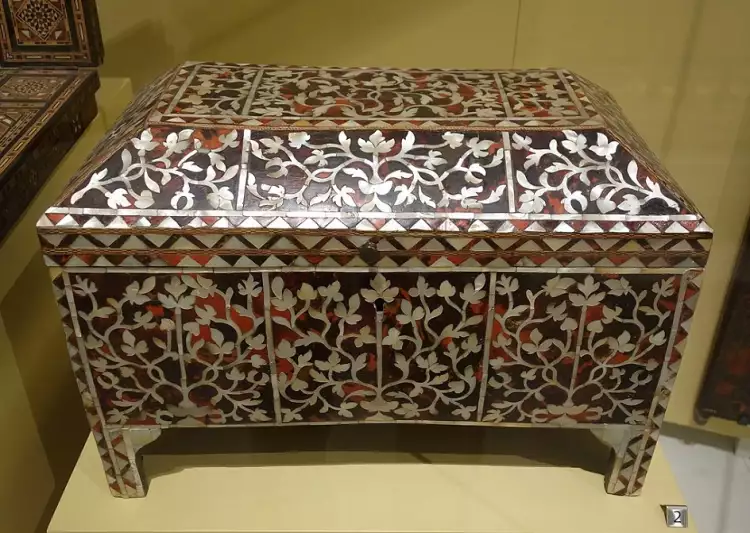 Inlay. Marquetry. Ottoman-era casket, 18th century
Inlay. Marquetry. Ottoman-era casket, 18th century
Damascening
Damascening refers to the technique of inlaying thin silver or gold details into recesses of objects made of steel. Traditionally, it's used in creating elite cold and firearms, as well as tableware and jewelry.
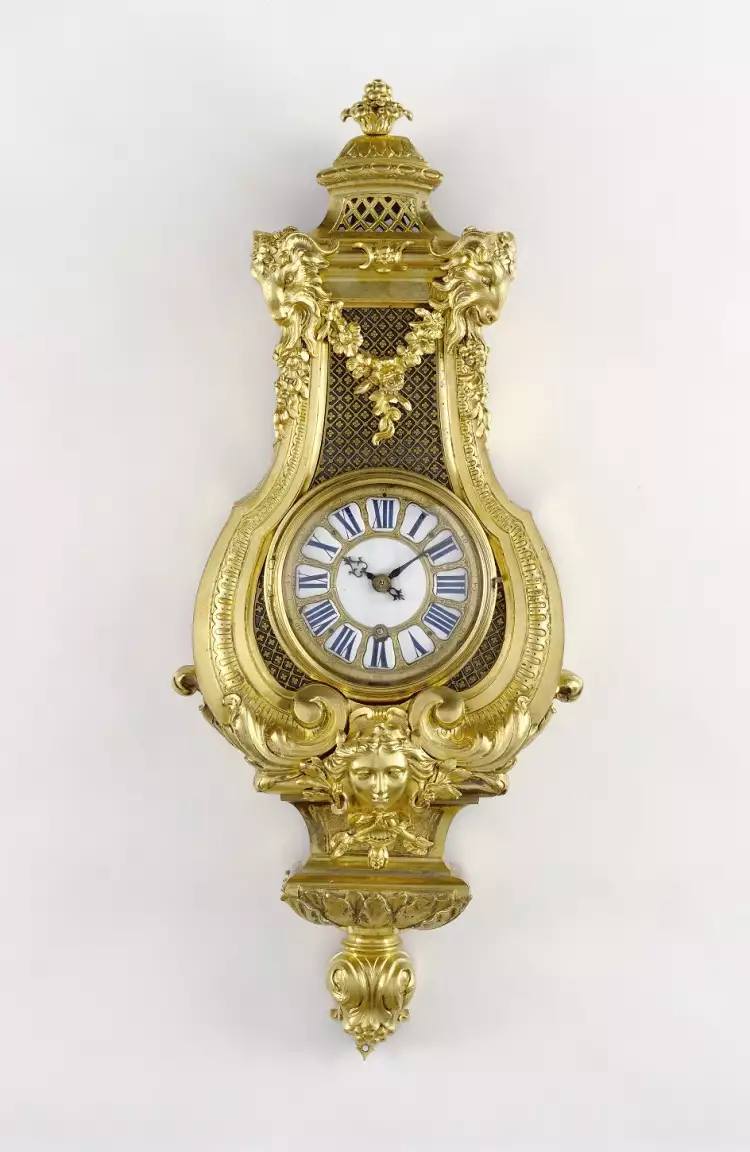 Inlay. André-Charles Boule. Inlaid wall clock, 1740
Inlay. André-Charles Boule. Inlaid wall clock, 1740
The unique art of damascening has been practiced since ancient times in Japan, Malaysia, and Spain. Magnificent ornaments made of precious metals against a dark oxidized steel background look exceptionally beautiful and are highly valued by antique collectors.
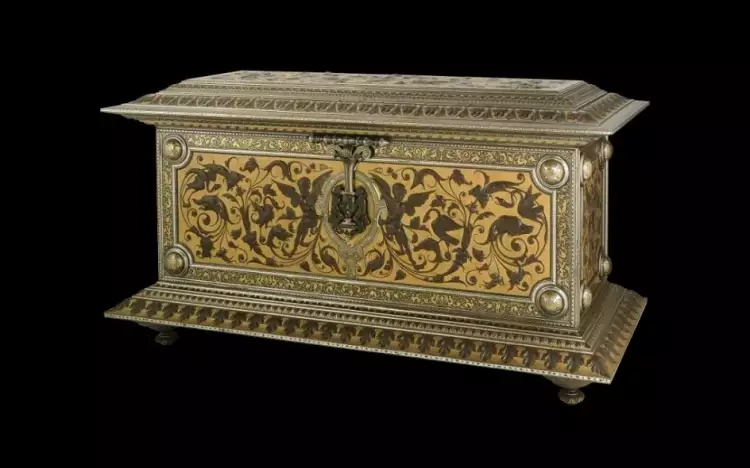 Inlay. Placido Zuloaga. Iron casson, 19th century
Inlay. Placido Zuloaga. Iron casson, 19th century
Niello
The niello technique for silver and other colored metals significantly differs from the above-mentioned forms of inlay. It involves engraving the surface of the object, which is then fired in a kiln. The artist applies a thin layer of powdered mixture of copper, lead, and silver sulfides.
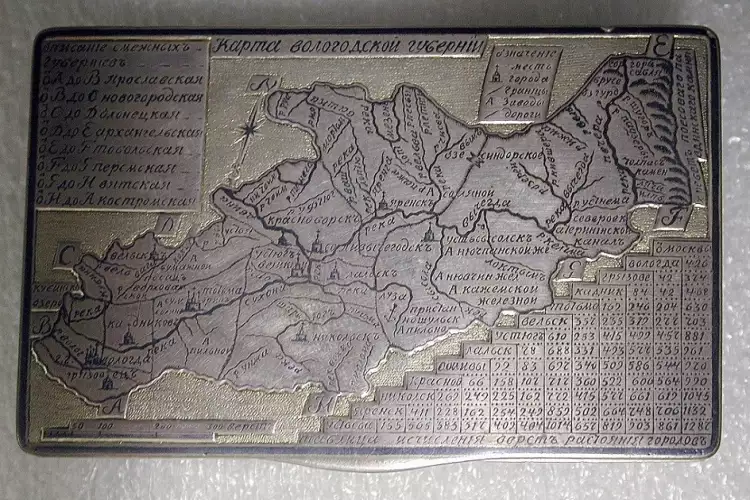 Inlay. Niello. A Russian snuffbox with a rangefinder, 19th century
Inlay. Niello. A Russian snuffbox with a rangefinder, 19th century
Under high temperature, the powder melts, filling the engravings and firmly fusing with the metallic base of the decorated object. Artists specializing in niello often create jewelry, paintings, and tableware (bowls, plates, and trays) using this technology.
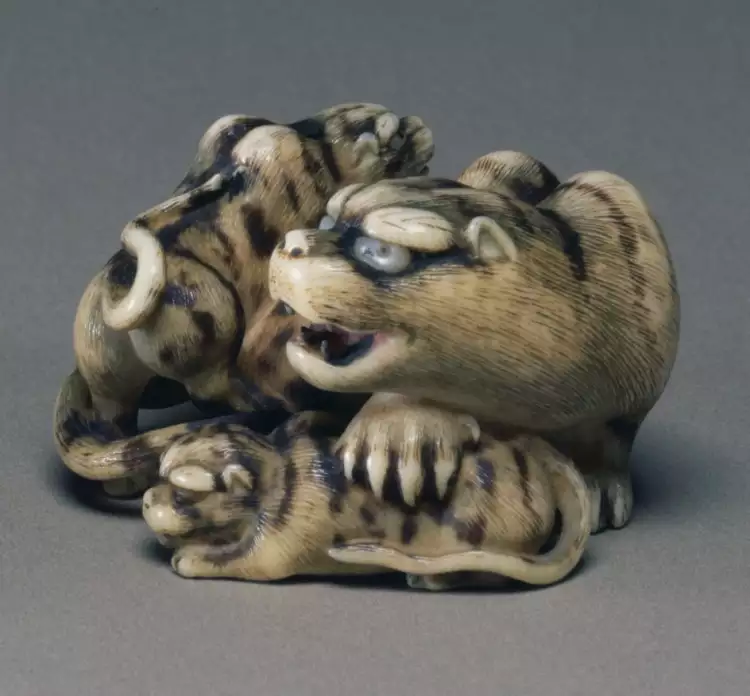 Inlay. Japanese netsuke of ivory with mother-of-pearl inlaid eyes, 19th century
Inlay. Japanese netsuke of ivory with mother-of-pearl inlaid eyes, 19th century
History of Inlay
The captivating history of inlay spans over 6,000 years. The oldest examples of inlaid artifacts found by archaeologists were created by unknown masters of the Sumerian and ancient Egyptian civilizations. As early as the 4th millennium BCE, the practice of mosaic wall decoration was widely spread in these regions.
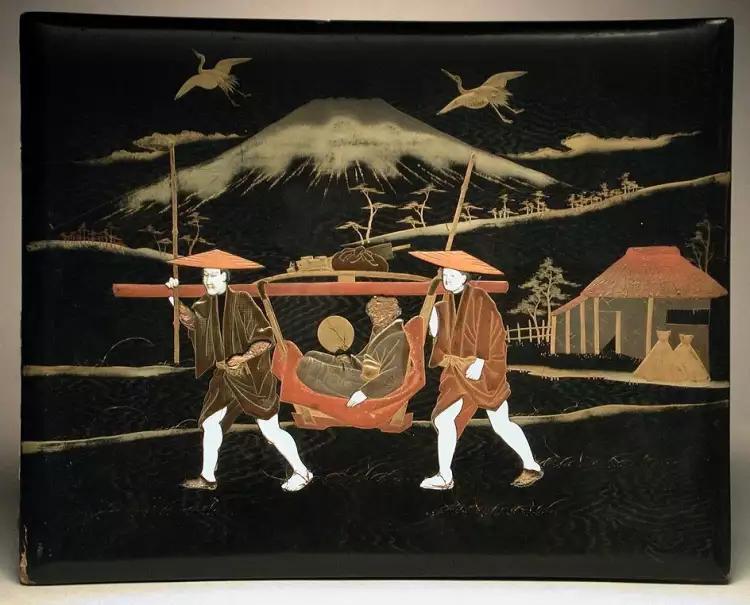 Inlay. Japanese lacquer photo album cover with ivory inlay, 1865
Inlay. Japanese lacquer photo album cover with ivory inlay, 1865
In the 2nd millennium BC, Egyptians mastered the technique of niello inlay, which they shared with their neighbors in the Near Eastern region. Ancient Greeks were the first to create durable mosaic floors from sea pebbles. In the Roman Empire, master artisans adorned buildings made of brick and concrete with marble slabs, while inlaid furniture for the elite was crafted using marquetry. However, the art of veneer inlay was lost for a long time and only experienced a revival in Italy in the late 15th century.
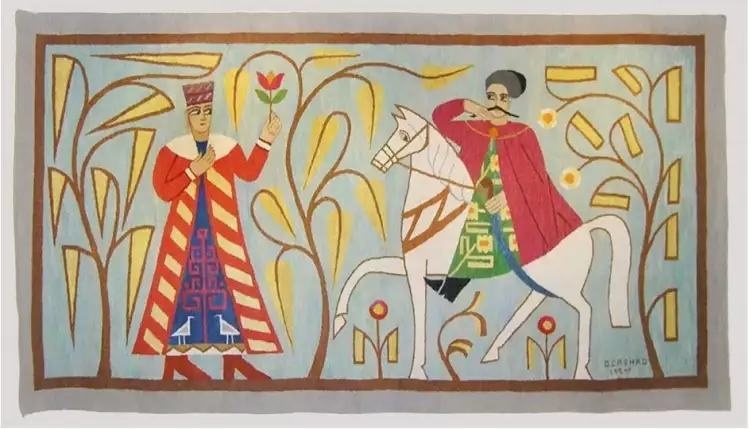 Inlay. Alexander Sayenko. Meeting of a kozak, 1924
Inlay. Alexander Sayenko. Meeting of a kozak, 1924
Byzantine monumental architectural monuments cannot be imagined today without their unique mosaics made of colored enamel (pieces of opaque glass), some of which are at least 600 years old.
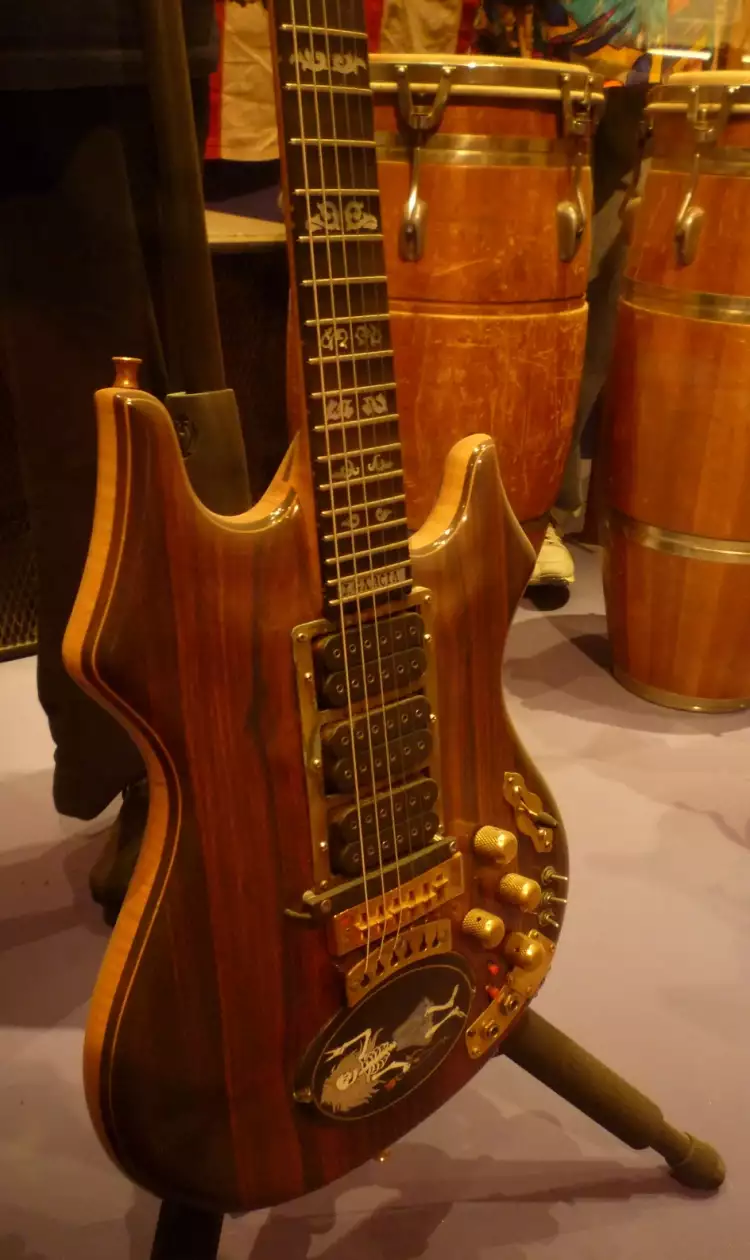 Inlay. Inlaid guitar by Jerry Garcia, 20th century
Inlay. Inlaid guitar by Jerry Garcia, 20th century
The technique of damascening was invented by the Chinese as early as the 5th century BCE. From there, this art spread throughout Asia, and with the beginning of the era of Arab conquests, it reached Europe, including the territory of Spain. For many centuries, Islamic masters passed on carefully guarded secrets of damascening to their apprentices, and after the end of the Reconquista, Christian artists adopted this technique.
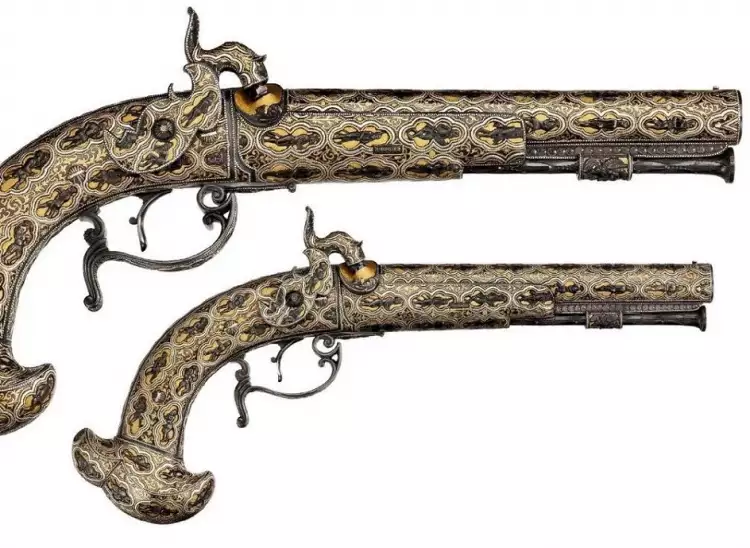 Inlay. Eusebio Zuloaga. Inlaid arquebuses, 19th century
Inlay. Eusebio Zuloaga. Inlaid arquebuses, 19th century
Interest in inlay never waned, despite the emergence of new forms of art in different historical epochs. Even today, talented artists from many countries around the world tirelessly work on creating unique decorated masterpieces.
Most Famous Inlayers
The names of the most famous inlayers are well-known not only to antique collectors but also to many ordinary people. Such masters as:
- Benvenuto Cellini - the renowned Italian jeweler of the Renaissance era. When creating ornaments from gold and precious stones, the master often used inlay techniques. Unfortunately, the majority of Cellini's works have been lost to posterity.
- André-Charles Boulle - the brilliant French artist. His contemporaries called him a jeweler of furniture due to the elegance of his work, and today, artworks created in the Boulle style are rightfully considered the pinnacle of marquetry technique.
- Eusebio Zuloaga - the Spanish weapons master, founder of modern European damascening. Zuloaga specialized in creating unique inlaid weapons - arquebuses, and three of his sons became renowned artists in the fields of painting, ceramics, and metalwork.
- Alexander Saenko - the Ukrainian master of decorating objects with an unusual material - straw. Through his creativity, he demonstrated to the world that unique everyday masterpieces, furniture, and even monumental artistic creations can be made from ordinary straw.
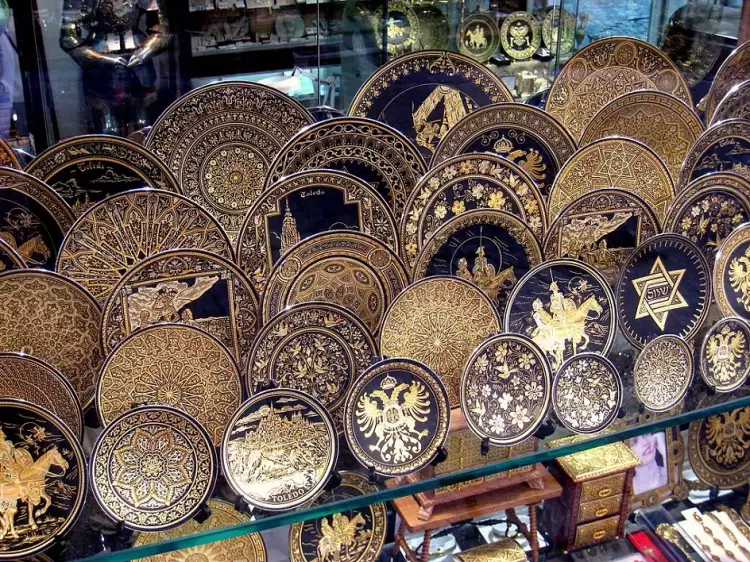 Inlay. Objects of modern decorative art made in the technique of damasking, 21st century
Inlay. Objects of modern decorative art made in the technique of damasking, 21st century
The Very Important Lot portal offers everyone a unique opportunity to participate in online art auctions. On the website, you can also directly purchase paintings from talented contemporary artists.

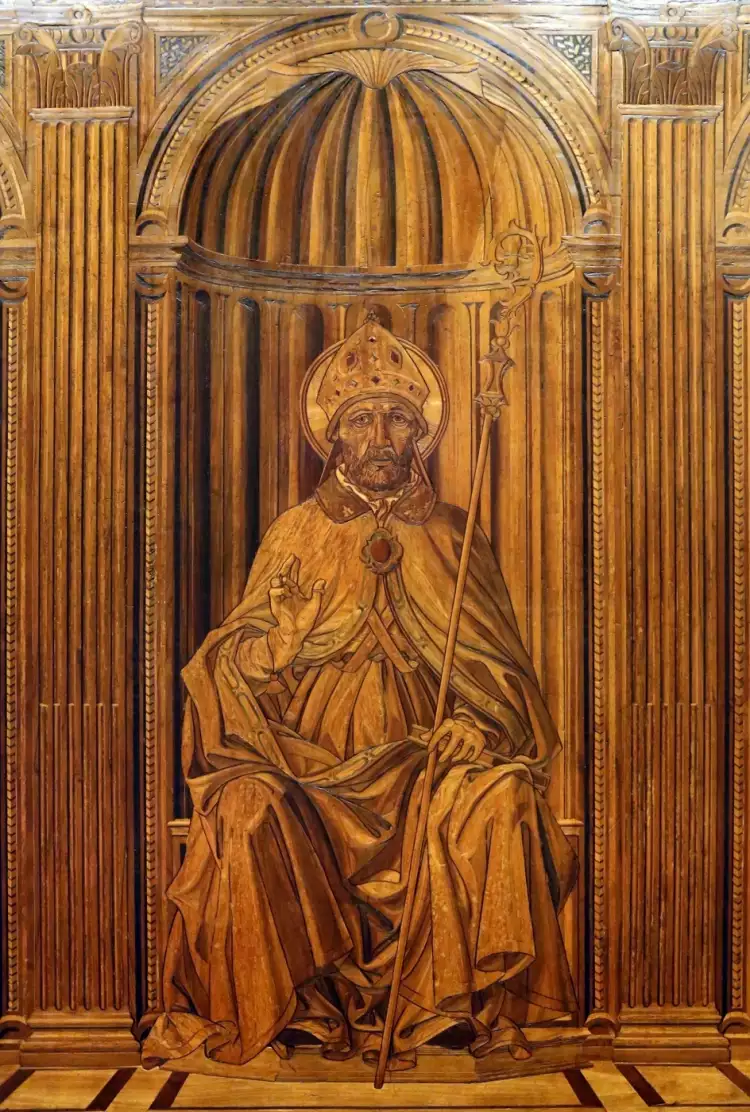
 Art Nouveau is an international style in the visual arts
Art Nouveau is an international style in the visual arts  Expressionism in interior design - the style of freedom and youth
Expressionism in interior design - the style of freedom and youth 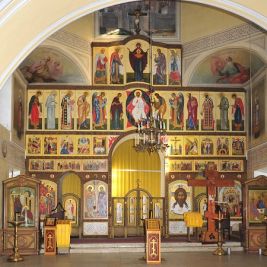 The most famous Orthodox icons
The most famous Orthodox icons  Battle genre in painting: heroic battles and anti-war pathos
Battle genre in painting: heroic battles and anti-war pathos 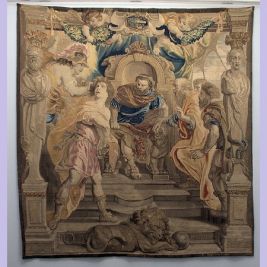 Tapestry - an exquisite handmade carpet with an ancient history
Tapestry - an exquisite handmade carpet with an ancient history 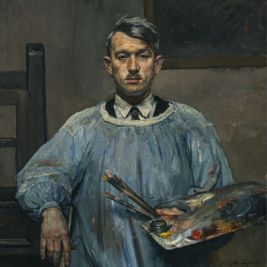 A colourful farmer Thomas Baumgartner
A colourful farmer Thomas Baumgartner 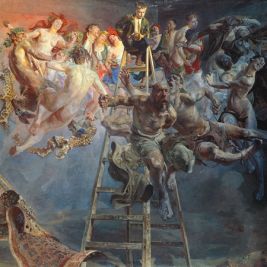 Symbolism: the essence of the term, history in painting, distinctive features, famous symbolists
Symbolism: the essence of the term, history in painting, distinctive features, famous symbolists 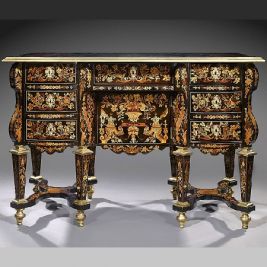 Marquetry is the elegant ancient art of inlaying veneer
Marquetry is the elegant ancient art of inlaying veneer  Art: its essence, types, genres, and history
Art: its essence, types, genres, and history  Academism is an authoritative, virtuoso, and conservative style
Academism is an authoritative, virtuoso, and conservative style